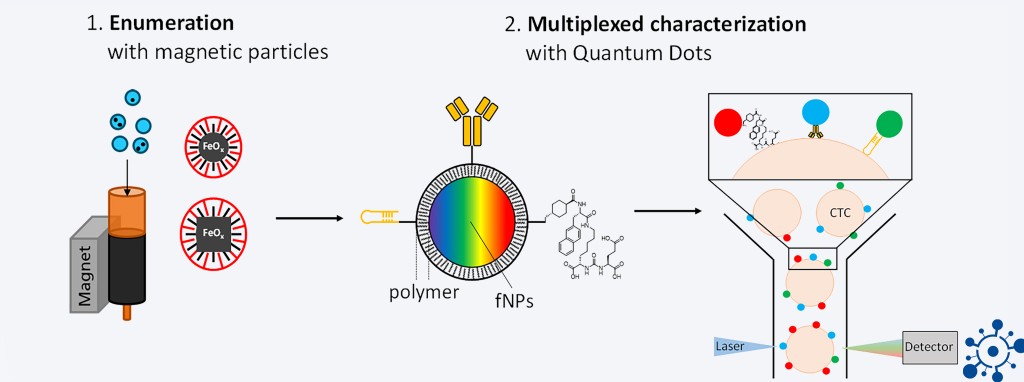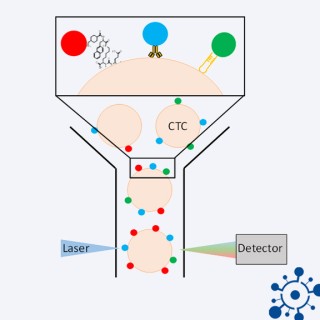P17 - Multiplexed Detection of Circulating Tumor Cells in Prostate Cancer Using Nanotechnology Platforms
Marina Mutas
Fraunhofer Institute for Applied Polymer Research (IAP), Center for Applied Nanotechnology (CAN)
;
Institute for Tumorbiology, University Medical Center Hamburg-Eppendorf
Dissemination of prostate cancer (PCa) cells to secondary sites has a significant impact on the formation of tumor metastasis and the fate of a patients’ course of the disease. It has been shown that the number and phenotypic heterogeneity of circulating tumor cells (CTCs) correlate with malignancy and prognosis. Liquid biopsies (LB) can non-invasively provide a real-time picture of a patient’s cancer by detecting CTCs. We propose a nanoparticle-based LB assay that combines the enumeration of CTCs and their characterization. After enumeration, the heterogeneous CTCs are analyzed with a library of fluorescent nanoparticles (fNPs). Each kind fNPs (with distinct emission wavelength) is biofunctionalized with PCa-specific biomarkers allowing the phenotyping of CTCs by the fluorescence signal. Enumeration and characterization occur in a single step with fluorescence analysis with a flow cytometer resulting in a cost-effective, time-efficient (<2 hours) LB assay. The developed multiplexed sensing platform will allow for the diagnosis and prognosis of PCa, providing also predictive information, treatment monitoring, and possibly early diagnosis of metastasis and recurrences. Furthermore, the LB assay is transferable to other tumor types by functionalizing the fNPs with the respective tumor-specific biomarkers.
Image above: Development of a LB assay: 1. Enumeration of circulating tumor cells (CTCs) with superparamagnetic iron oxide nanoparticles (SPIONs) followed by 2. Multiplexed characterization of the CTC membrane with Quantum Dots biofunctionalized with tumor-specific biomarkers (antibodies, aptamers, small molecules) and distinct emission wavelengths.
Grants: This project is part of Mildred Scheel Nachwuchszentrum Hamburg, supported by Deutsche Krebshilfe
Contact: m.mutas@uke.de
-
Selected publications on topic
---



